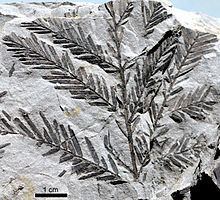Class Pinopsida Rank Species | Division Pinophyta Order Pinales | |
 | ||
Similar Dawn redwood, Sequoia affinis, Metaseiulus, Pinales, Glyptostrobus | ||
Metasequoia occidentalis is an extinct redwood species of the family Cupressaceae that is found as fossils throughout the Northern Hemisphere. It is one of three extinct species of Metasequoia that are currently recognized as valid.
Contents
History
Fossilized Metasequoia-like remains were noted in Europe and North America as long ago as the 1800s but were assigned to a variety of other genera such as Sequoia (redwoods) and Taxodium (bald cypresses). Many remains are found in bunches near clumps of coal, almost preserving them. It was not until living Metasequoia trees (Metasequoia glyptostroboides) were discovered and described from a remote area of China during the 1940s that true affinity of most of these fossils became apparent.
The species M. occidentalis is based on fossils that were originally described as Taxodium occidentale by J.S. Newberry in 1863. In 1951 they were reassigned as M. occidentalis by R.W. Chaney based on their close resemblance to living Metasequoia. It has been said that, with few exceptions, the bulk of the fossils described in the literature indicate that M. occidentalis was indistinguishable from living Metasequoia glyptostroboides.
Description
Like living Metasequoia, M. occidentalis was deciduous. The foliage consists of branchlets with oppositely arranged leaves. The leaves are ovate to linear in shape, ranging from 6–25 mm in length and 1–2 mm in width, with a distinct midvein, a petiolate base, and an acute tip. The seed-bearing cones are globose to ovoid, 11–40 mm long and 6–34 mm wide, with decussately arranged triangular scales, and are borne on long, leafless stalks. The seeds have two wings, are ovoid to cordate in shape, and are up to 5 mm long and 4 mm wide. The pollen-bearing cones are small, globose to ovoid, 1–5 mm long and 0.5–4 mm wide, and oppositely arranged on specialized stalks with one terminal cone.
Age and Distribution
M. occidentalis appeared in fossil record during the Late Cretaceous epoch (Cenomanian stage). By the Tertiary period it had become a major constituent of lowland and swampy forests in the northern circum-Pacific and polar regions, where it commonly coexisted with Glyptostrobus europaeus. Fossils assignable to M. occidentalis have been reported from parts of the United States, Canada, Russia, China, Japan, Greenland and Svalbard, but Metasequoia appears to have been rare or absent in much of Europe.
